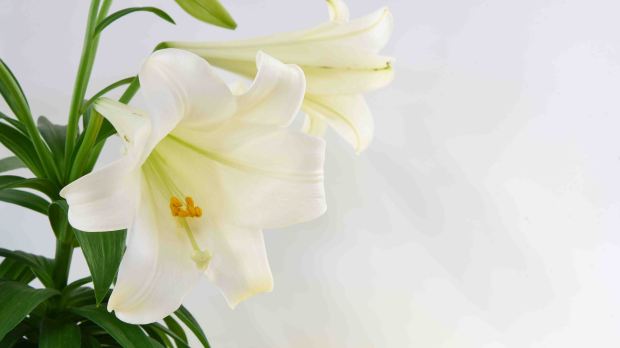You’ve heard of Easter eggs and Peeps and bunnies. But chances are you do not really know the story of the lilum longiflorum – the Easter lily. This majestic white flower, with its trumpet-like shape and sweet scent, is as much a symbol of Easter as any other. But why, and how?
The Easter lily has a fascinating history. Native to Taiwan and the Ryukyu islands off the coast of Japan, it quickly became a prized European decorative plant in the 1700s, as Portuguese and Spanish sailors arrived in the area. But the true rise of the Easter lily in the West began when a World War I soldier, Louis Houghton, started cultivating them. After the attack on Pearl Harbor, growing lilies became an industry on its own.
Now, the symbolism of the flower in Christianity is relatively complex. On the one hand, the Easter lily blooms purely white – a color heavily associated with purity and holiness. The flower’s trumpet shape is said to symbolize a herald announcing Christ’s resurrection. But the very way a lily grows is symbolic: From a dormant bulb buried in the earth, a beautiful and vibrantly alive flower emerges, mirroring the story of Jesus rising from the tomb.
Lilies are found in the Bible – although the text is clearly not referencing this Japanese variety. Jesus himself mentioned the flower, saying “Consider the lilies how they grow: they toil not, they spin not; and yet I say unto you, that Solomon in all his glory was not arrayed like one of these” (Luke 12:27). A pious legend claims that after Jesus’ death and resurrection, lilies were found growing in the Garden of Gethsemane. The same legend has it that these flowers sprang up where drops of Jesus’ bloodied sweat fell as he prayed.
Now, the Easter lily isn’t just about symbolism. Its potent fragrance fills churches and homes during the Easter season with a heady sweetness. For many, this scent is inextricably linked to a sense of celebration and spiritual awakening, as Easter finally arrives.
While lovely to look at, be warned: Easter lilies are toxic to cats. If you’re a cat owner, admire these flowers from afar or opt for safe alternatives.
Whether gracing an altar or adorning your Easter table, the Easter lily holds both beauty and profound meaning. Its presence reminds us that even from the darkest times, new life will always bloom.



